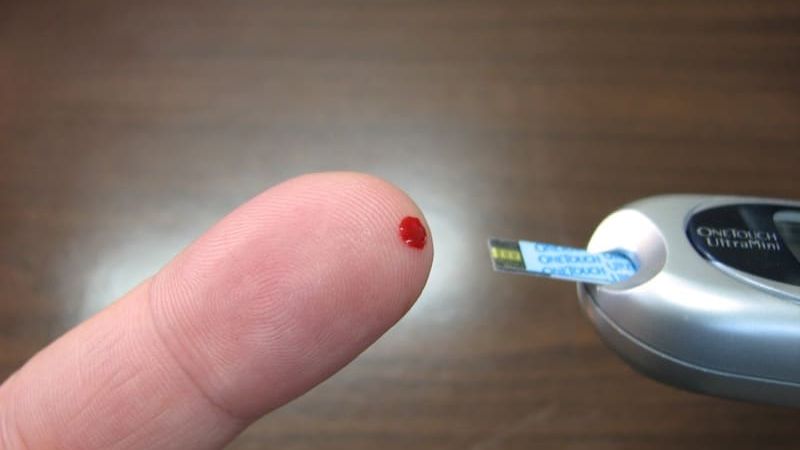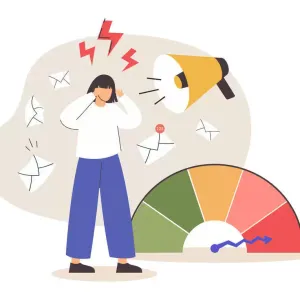

Our Review Process
Our articles undergo extensive medical review by board-certified practitioners to confirm that all factual inferences with respect to medical conditions, symptoms, treatments, and protocols are legitimate, canonical, and adhere to current guidelines and the latest discoveries. Read more.
Our Editorial Team
Shifa Fatima, MSc.
Author
Dr. Apoorva T, MHM.
MEDICAL ADVISOR
Self Monitoring of Blood Glucose (SMBG)
SMBG or Self Monitoring of Blood Glucose is the cornerstone of Diabetes Management. It is an empowering tool that allows you to be an active partner in the treatment and eventually in prevention of future diabetes related complications. It also helps you in modifying lifestyle habits, coping in times of illness or stress, and aiding you to make necessary changes in the dose of insulin or other medication.
Table of Contents
Who needs Self Monitor of Blood Glucose?
- Patients with any Type of Diabetes including Prediabetes and trying to keep glucose levels in the near normal range for the prevention of complications
- Individuals with a tendency to develop severe Ketosis or Hypoglycemia
- Individuals with Hypoglycemia Unawareness
- Individuals undergoing intensive treatment programs, especially if using insulin pumps, or taking multiple daily insulin injections. Also know about pre diabetes levels.
What are the Benefits of Self Monitoring of Blood Glucose?
- It provides an objective feedback on blood glucose values which is used to make adjustments in your food intake, activity patterns, and medication dosage
- Supports and enhances a diabetes care program that can educate you about the condition
- It also produces accurate records of daily glucose fluctuations and trends, as well as alerting you to acute episodes of hyperglycemia and hypoglycemia
- It provides you with a tool for achieving and maintaining specific glycemic goals
How Frequently should you check your Blood Glucose?
The frequency of monitoring depends on the below factors
- The Level of Glycemic Control
- The Type of Diabetes
- The willingness and ability to perform tests independently

Barriers to self Monitoring of Blood Glucose
- The monitoring method should match your level of skill and aptitude.
- Factors that affect the SMBG performance include - Visual acuity, Fine motor coordination, Cognitive ability, Comfort with technology, willingness, and cost.
- Psychological issues such as fear of increased values and increased guilt can impede blood sugar monitoring.
What can affect the result of SMBG?
Different factors can lead to an alteration in the results of SMBG diabetes at home.
- Strips – If the strips are exposed to any kind of environmental germs or toxins, it may lead to an adulterated result. At times, it is also likely that the enzymes in the strips do not work well.
- Physical factors – Things like altitude, temperature, etc can also affect the readings of the glucometer. The strips are sensitive to oxygen and oxygen concentration. Higher altitude or temperature may affect this ratio.
- Personal aspects – Inability to use the meter correctly, dirty hands, water on the hands/fingers, etc can lead to a change in the sugar levels
- Pharmacological factors – Any medication or drug that one is on can also affect the readings. Also read about uses and side effects of sugar tablet.
Disadvantages of Monitoring Blood Glucose at Home
One thing that a person with diabetes cannot escape is the self-monitoring of blood glucose. While it is true for all kinds of diabetes, this is primarily vital and the most important part of the life of a T1D. Since this type goes through the most fluctuations that can be frequent and intense, regular checking of blood sugar levels is recommended. In fact, doctors often present type 1 diabetes blood glucose monitoring on a chart on how to monitor their glucose and the frequency at which this should be done. They recommend SMBG at least twice a day even years after diagnosis. The reason behind this is that greater awareness of the current BG levels would help an individual with diabetes take their insulin shots accordingly or catch the symptoms of lows. Type 2 diabetes glucose monitoring gives you an idea of how to manage your food and exercise.
At times, overly self monitoring of blood glucose of these levels can also cause certain issues. It is important to maintain a balance between monitoring and over-monitoring to function at the optimal level.
Some disadvantages of knowing how to check glucose level at home would be:
- Feeling anxious about the blood sugars in case they are not in the proper range.
- Worrying about the state of health
- Physical pain of finger pricking
- Expenses of the lancets, testing strips, etc.
These disadvantages, however, should not deter you from checking your levels regularly. These can be worked upon and the benefits of monitoring the levels far outweigh the costs. Also read about random blood sugar level and it's test.
Bottom Line
Self-monitoring of Blood Glucose is extremely helpful in providing information on your dynamic blood glucose profile. This information can help with the appropriate scheduling of food, determine which foods or diet are best for one's control, activity, and how well the medication is working. It is also beneficial to understand the timing of blood glucose variations, reduce anxiety and increase your understanding of hypoglycemia. Read more about diabetes program.
FAQs
What are the Self-Monitoring Skills of Diabetes?
One of the widely used self-monitoring skills for diabetes is knowing how to use a continuous glucose monitor or any other glucose reading device. Besides learning how to use a glucose monitor, you can develop self-monitor skills like controlled eating, regular exercising, etc., to take steps towards an improved life.
Can You Self-check Your Blood Sugar?
Yes, you can self-check your blood sugar using a glucose reader. The market has various devices that can be used to get real-time, instant blood sugar levels. If you’re trying to alter your lifestyle to normalize your blood sugar levels, a constant glucose monitor device will be a better option than the regular blood sugar reader.
What is a normal blood sugar level?
A normal blood sugar level can be anything within the range of 90-140mg/dL. This level can also change based on the time of the day and the age of the person. Usually, morning sugars can range from 80-1120mg/dL, and post meals normal levels can also go up to 160/170 mg/dL. In children, the range of normal levels is much wider.
What is the best food for low sugar levels?
When dealing with hypoglycemia, any food that has sugar and carbs in it would be helpful. Usually, liquids work best as they are able to rapidly make the sugars enter the bloodstream thus correcting the lows at the earliest. Glucose tablets, biscuits, glucose gel, soft drinks, sugary foods, etc (with approximately 15 grams of sugars) are most recommended during lows. Also read about sugar free biscuits for diabetes.
Why is it important for patients with diabetes to use a glucometer?
A glucometer is an instrument that is used by people with diabetes to check their glucose at home. It saves them from the effort of going to a lab and getting their tests done every time and the results are also available within seconds. At any point, if you are experiencing symptoms of highs or lows, having a glucometer in handy at home would be beneficial. It would equip you to deal with any immediate symptoms and bring the sugar levels to the optimal range. Too many undiagnosed or untreated highs or lows can cause complications in the future. A glucometer and self-monitoring of blood glucose can reduce the likelihood of that happening.
References
- https://pubmed.ncbi.nlm.nih.gov/20923485/
Disclaimer
This website's content is provided only for educational reasons and is not meant to be a replacement for professional medical advice. Due to individual differences, the reader should contact their physician to decide whether the material is applicable to their case.
More by Shifa Fathima

अर्जुनरिष्ट: फायदे, खुराक, नुकसान | पढ़ें | Sugar.fit

मधुमेह के लिए मधुनाशिनी वटी: उपयोग, लाभ, खुराक और दुष्प्रभाव|

मधुमेह को नियंत्रित करें भारतीय आहार से





